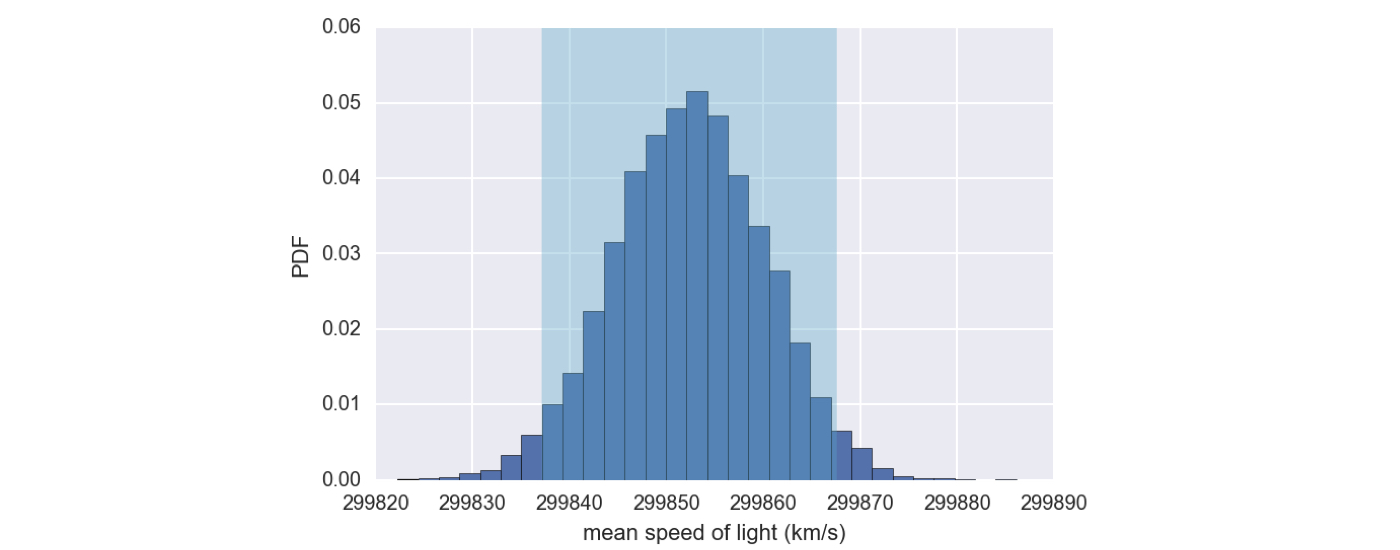Bootstrap confidence intervals
Statistical Thinking in Python (Part 2)

Justin Bois
Lecturer at the California Institute of Technology
Bootstrap replicate function
def bootstrap_replicate_1d(data, func): """Generate bootstrap replicate of 1D data.""" bs_sample = np.random.choice(data, len(data)) return func(bs_sample)bootstrap_replicate_1d(michelson_speed_of_light, np.mean)
299859.20000000001
bootstrap_replicate_1d(michelson_speed_of_light, np.mean)
299855.70000000001
bootstrap_replicate_1d(michelson_speed_of_light, np.mean)
299850.29999999999
Many bootstrap replicates
bs_replicates = np.empty(10000)for i in range(10000): bs_replicates[i] = bootstrap_replicate_1d( michelson_speed_of_light, np.mean)
Plotting a histogram of bootstrap replicates
_ = plt.hist(bs_replicates, bins=30, normed=True)
_ = plt.xlabel('mean speed of light (km/s)')
_ = plt.ylabel('PDF')
plt.show()
Bootstrap estimate of the mean

Confidence interval of a statistic
- If we repeated measurements over and over again,
p%of the observed values would lie within thep%confidence interval.
Bootstrap confidence interval
conf_int = np.percentile(bs_replicates, [2.5, 97.5])
array([ 299837., 299868.])

Let's practice!
Statistical Thinking in Python (Part 2)

